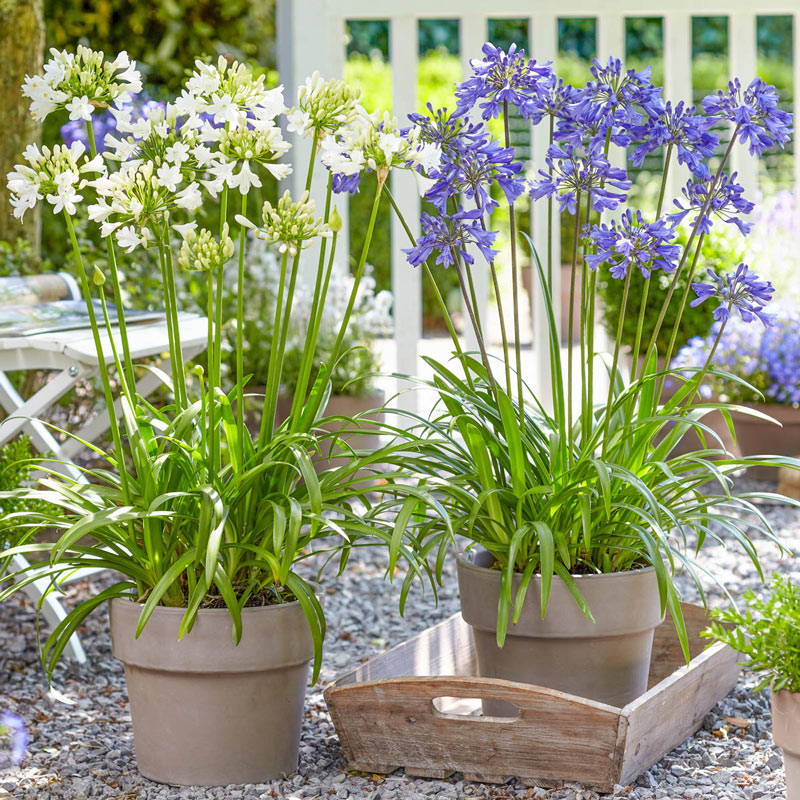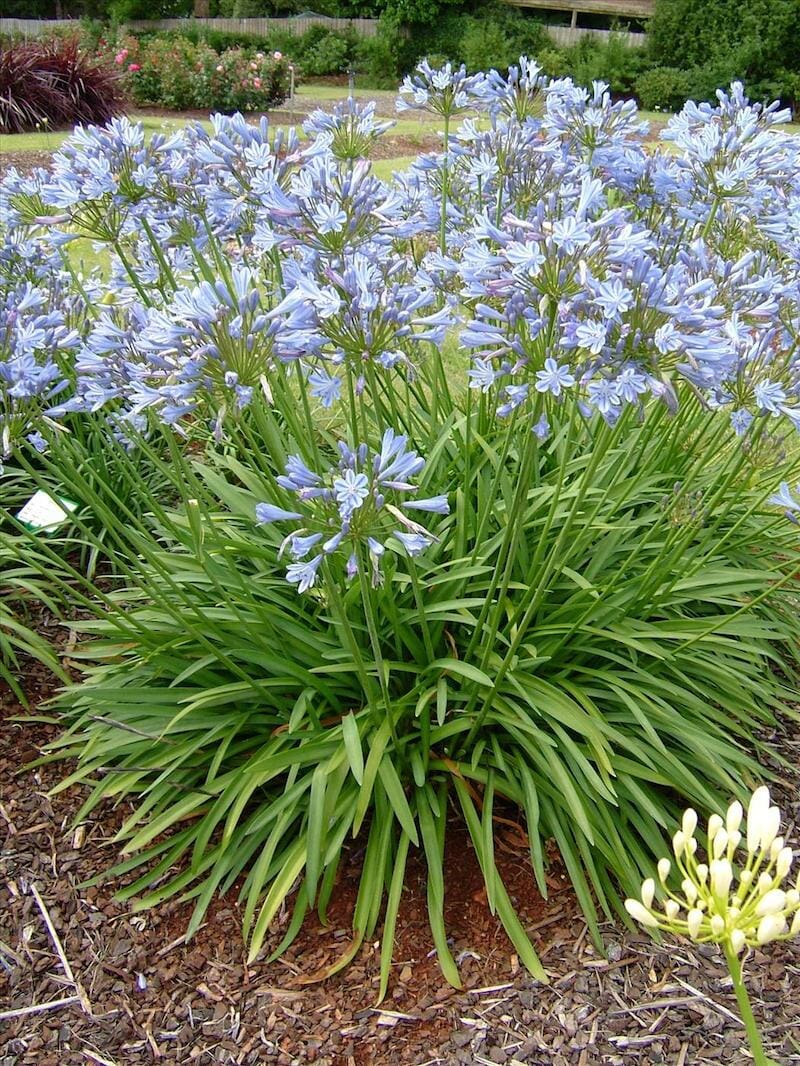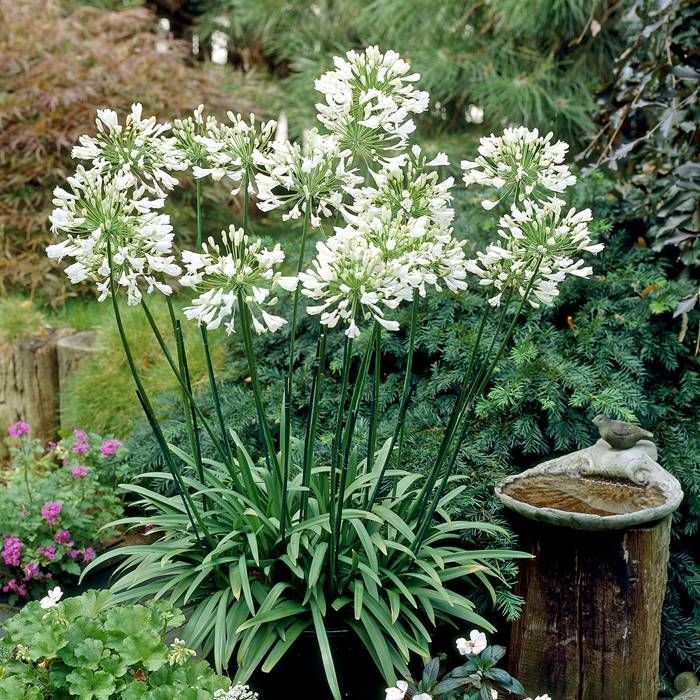Mastering the Art of Agapanthus Care: Crucial Actions for Healthy And Balanced Growth and Vivid Blooms
In the world of gardening, the growing of agapanthus stands as a rewarding venture for those that seek to support these classy flowering plants. From picking the right selection to grasping trimming techniques, the trip in the direction of growing growing agapanthus plants is complex and holds the crucial to unlocking the full capacity of these botanical gems.

Picking the Right Agapanthus Range

When choosing the appropriate Agapanthus variety for your yard, think about aspects such as environment suitability, blossom shade, and development routine. Additionally, take into consideration the climate in your region to guarantee the Agapanthus range you choose can flourish in your specific problems. Comprehending the development routine of various Agapanthus ranges is critical for appropriate placement within your garden.
Perfect Growing Problems
Taking into consideration the optimum ecological demands is vital for successful Agapanthus farming. Agapanthus flourishes in well-draining dirt with a somewhat acidic to neutral pH level. When growing, pick a place that obtains full sunshine to partial shade. In hotter environments, providing some mid-day color can avoid scorching of the fallen leaves. Agapanthus plants are sensitive to chilly temperature levels and ought to be secured from frost during cold weather.
To make sure healthy growth and dynamic blossoms, plant Agapanthus light bulbs at a depth of about 2-4 inches and space them 8-12 inches apart. Including raw material, such as compost, to the soil can improve water drainage and fertility, advertising robust root development. Mulching around the base of the plants aids keep dampness and subdues weed development. Routine watering is important, specifically during the expanding period, to maintain the dirt consistently wet yet not saturated.
Watering and Fertilizing Tips
Maintaining proper moisture levels and providing crucial nutrients are key aspects in the treatment routine for Agapanthus plants. When it comes to watering Agapanthus, it is vital to strike an equilibrium. These plants choose constantly damp dirt but are susceptible to root rot if overwatered.
Feeding Agapanthus is essential for promoting healthy and balanced development and respected blossoms. Use a balanced plant food, such as a 10-10-10 formula, in the very early springtime as brand-new growth arises. By complying with these watering and fertilizing pointers, you can guarantee your Agapanthus plants prosper and produce lively, durable blooms.
Trimming Strategies for Agapanthus
Pruning Agapanthus plants at the ideal times and with proper techniques is vital for keeping their health and advertising ideal growth and blooming. The ideal time to trim Agapanthus remains in late wintertime or very early springtime prior to brand-new growth emerges. Start by removing any type of dead or yellowing leaves near the base of the plant. Cut them as close to the ground as possible without harming the arising shoots.
For flowered stems, wait till the flowers have actually perished and after that cut them back to the base. This not just cleans up the plant's look yet additionally go right here urges the click for more info growth of new flower buds. Deadheading spent flowers can additionally reroute the plant's power right into generating more blossoms rather than establishing seeds. Nevertheless, if you wish to accumulate seeds for proliferation, leave some blossoms to completely dry and mature on the plant.
Bear in mind to make use of clean, sharp tools to make accurate cuts and reduce the danger of presenting illness. Agapanthus. Normal pruning will certainly help maintain your Agapanthus looking healthy and neat while guaranteeing a bountiful display of beautiful blooms
Taking Care Of Common Insects and Diseases
After making certain proper pruning techniques for Agapanthus, it is important to address usual insects and conditions that can impact the health and wellness and vitality of these plants. Agapanthus plants are typically sturdy yet can still succumb certain concerns. One typical parasite that influences Agapanthus is the Agapanthus gall midge. This little, orange fly lays its eggs in the foliage, leading to distorted development and flower buds that fall short to open. To battle this parasite, trim and destroy any kind of affected plant components and take into consideration using insecticidal soap.
In addition, Agapanthus plants can endure from origin rot if they are grown in poorly draining soil. By being cautious and taking prompt action against insects and diseases, you can help your Agapanthus plants flourish and create vivid blooms. Agapanthus.

Verdict
Finally, mastering the art of agapanthus treatment entails choosing the best selection, giving perfect growing conditions, proper watering and fertilizing, suitable trimming techniques, and attending to typical bugs and conditions. By complying with these crucial steps, you can ensure healthy growth and lively blooms for your agapanthus plants. Bear in mind to routinely keep an eye on and maintain your plants to advertise their overall wellness and long life.
To ensure healthy and balanced development and dynamic blossoms, plant Agapanthus bulbs at a depth of regarding 2-4 inches and space them 8-12 inches apart. By following these watering and fertilizing ideas, you can ensure your Agapanthus plants prosper and produce lively, resilient blooms.
One typical bug that impacts Agapanthus is the Agapanthus gall midge. Additionally, Agapanthus plants can endure from origin rot if they are planted in poorly draining pipes dirt. By adhering to these essential steps, you can make sure healthy and balanced development and lively blooms for your agapanthus you can look here plants.